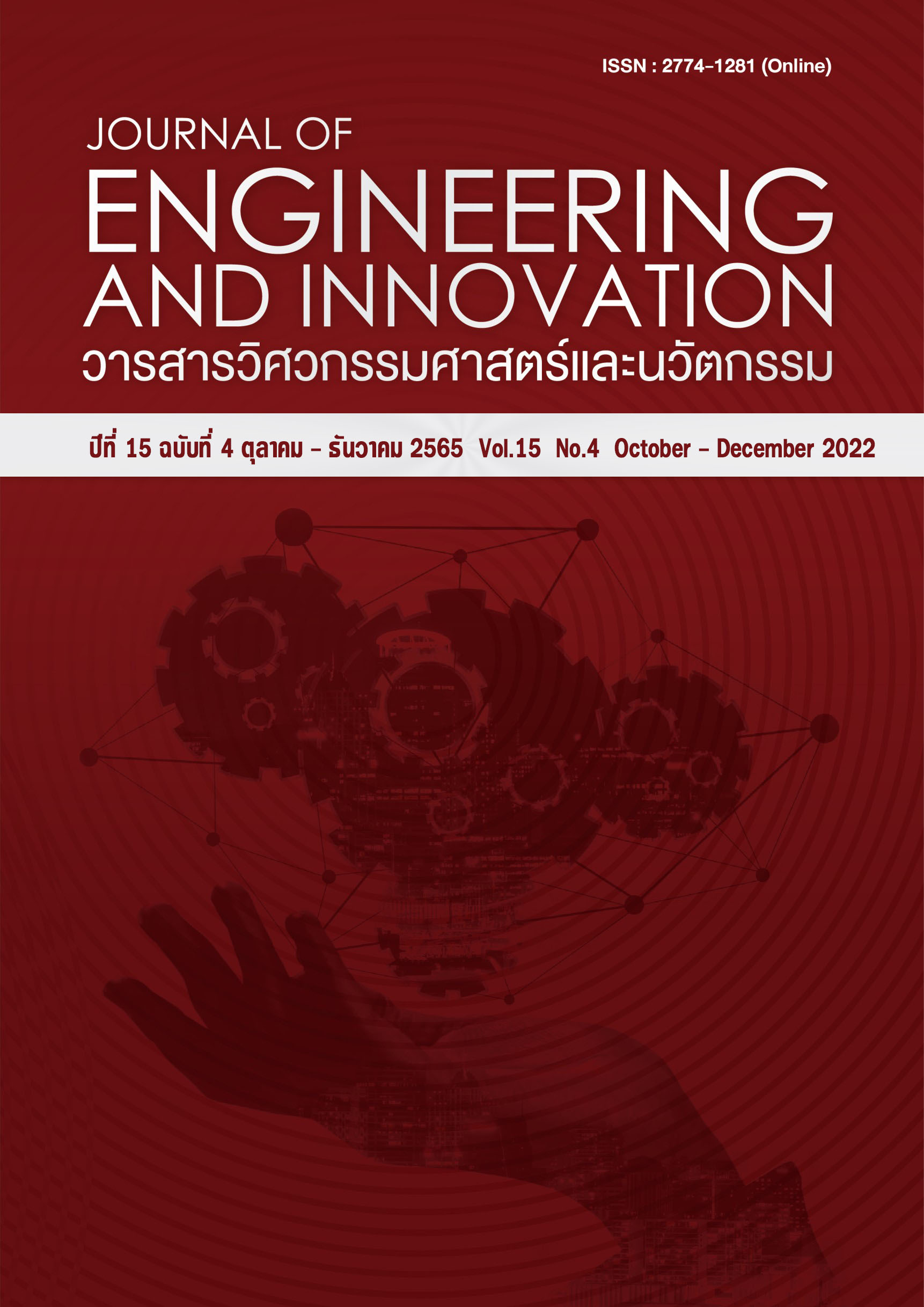Prediction of unconfined compressive strength of soft clay improved with cement and fly ash geopolymer using multiple-linear regression method
Main Article Content
Abstract
This paper investigated the prediction of unconfined compressive strength of soft clay improved with cement and fly ash geopolymer using a multiple linear regression method. Soft clay (c) was collected at a depth of 5-8 m. from Klong Toey in Bangkok. Fly ash (FA) was obtained from the Mae Moh power plant in Lampang. Factors influencing this study were cement content, Na2SiO3:NaOH ratio, and water content. The results showed that water content and cement content affect the unconfined compressive strength of the soft clay improved with cement and fly ash geopolymer samples. The unconfined compressive strength of the samples increased with a decrease in water content and increase in cement content. The optimum ingredient of soft clay improved with cement and fly ash geopolymer sample was found at c:binder ratio of 70:30, FA:C ratios between 95:5-70:30, liquid alkaline:binder ratio of 0.6, Na2SiO3:NaOH ratio of 50:50, the concentration of NaOH of 8 molar and water contents of LL, 1.5LL, and 2.0LL. This equation using the multiple linear regression method is useful for predicting 28-day unconfined compressive strength of soft clay improved with cement and fly ash geopolymer.
Article Details
References
เกษม เพชรเกตุ, พินิจ ตั้งบุญเติม. การใช้เสาเข็มดินซีเมนต์กับดินเหนียวอ่อนกรุงเทพฯ. ข่าวช่าง 2536; 254: 41-45.
ชยานันท์ ศรีเจริญ, รุ้งลาวัลย์ ราชัน, สุขสันติ์ หอพิบูลสุข. การพัฒนากำลังของเสาเข็มดินซีเมนต์และเสาเข็มดินซีเมนต์ผสมเถ้าลอยในชั้นดินเหนียวอ่อนกรุงเทพฯ. วารสารวิจัยและพัฒนา มจธ. 2557; 2:151-164.
Bredenberg H, Holm G, Bengt B. Dry Mix Methods for Deep Soil Stabilization. Taylor and Francis group; 2017.
อุบลลักษณ์ รัตนศักดิ์. วัสดุจีโอโพลีเมอร์. สมาคมคอนกรีตแห่งประเทศไทย; 2560.
Davidovits J. Chemistry of geopolymer systems, terminology, Proceedings of Geopolymer. International Conference, France, 1999; 9-40.
American Society for Testing and Materials. ASTM D2487. Standard practice for classification of soils for engineering purposes (unified soil classification system). ASTM International. 2011.
American Society for Testing and Materials. ASTM C618. Standard specification for coal fly ash and raw or calcined natural pozzolan for use in concrete. ASTM International. 2015.
American Society for Testing and Materials. ASTM D2166. Standard Test Method for Unconfined Compressive Strength of Cohesive Soil. ASTM International. 2000.
Aliabdo AA, Elmoaty MA, Salem HA. Effect of cement addition, solution resting time and curing characteristics on fly ash based geopolymer concrete performance. Construction and Building Materials 2016; 581-593.
Kaja AM, Lazaro A, Yu QL. Effects of Portland cement on activation mechanism of class F fly ash geopolymer cured under ambient conditions. Construction and Building Materials 2018; 1113–1123.
Raphaelle P, Martin C, Raphael B. Influence of the initial water content in flash calcined metakaolin-based geopolymer. Construction and Building Materials 2019; 421-429.
Garcia-Lodeiro I, Malseva O, Palomo A, Fernandez-Jimenez A. Hybrid alkaline cements. Part I: Fundamentals. Romanian Journal of Materials 2012; 330-335.
Phetchuay C, Horpibulsuk S, Arulrajah A, Suksiripattanapong C, Udomchai A. Strength development in soft marine clay stabilized by fly ash and calcium carbide residue based geopolymer. Applied Clay Science 2016; 134-142.
Keats J. Stabilization and Solidifition, In Hazardous Waste Management, McGrawhill Book Co.; 1994, 641-642.
การควบคุมการก่อสร้างทาง เล่มที่ 2. คู่มือการควบคุมงานก่อสร้างทางหลวง. กรมทางหลวง; 2550.

